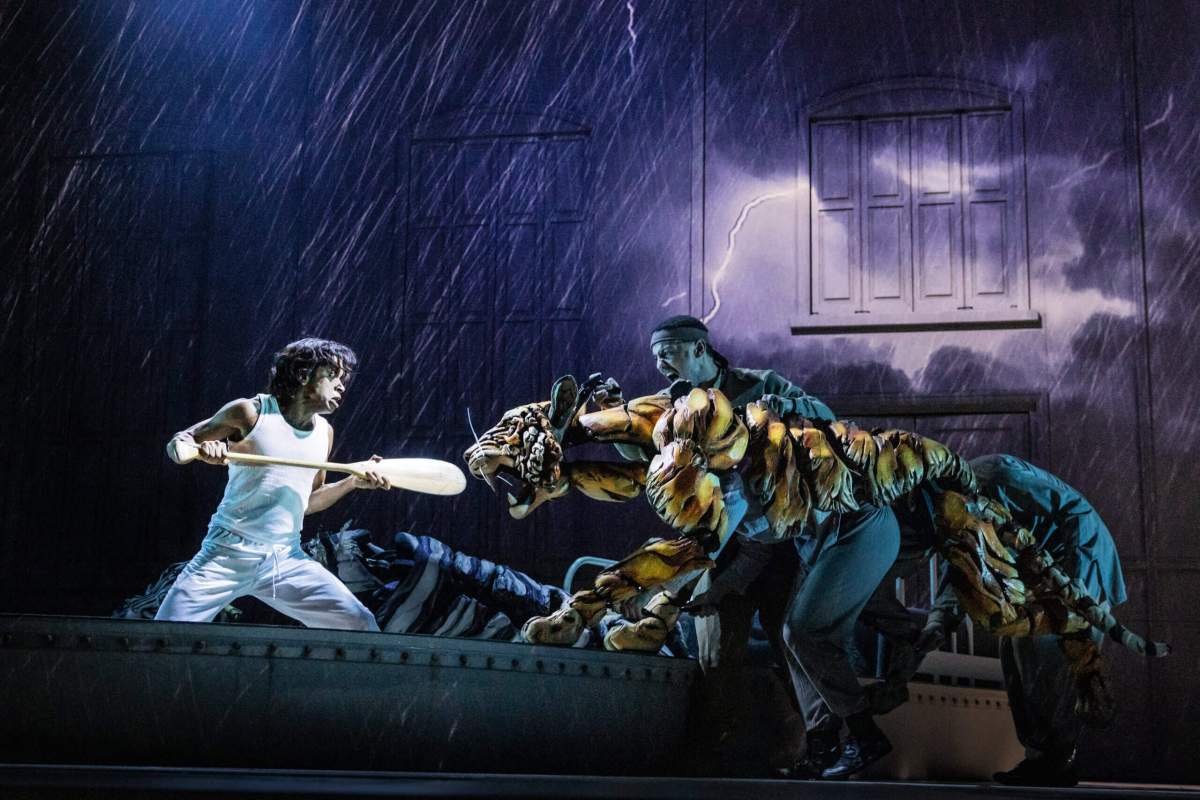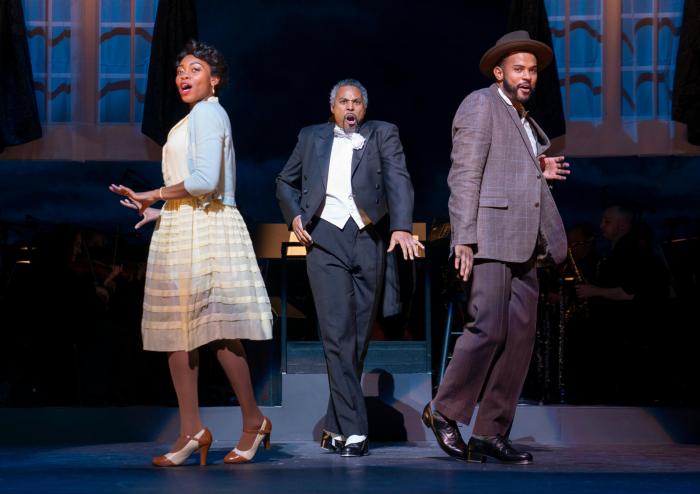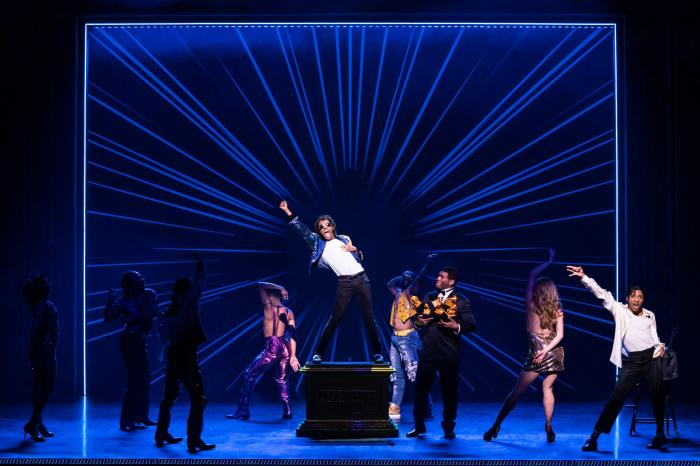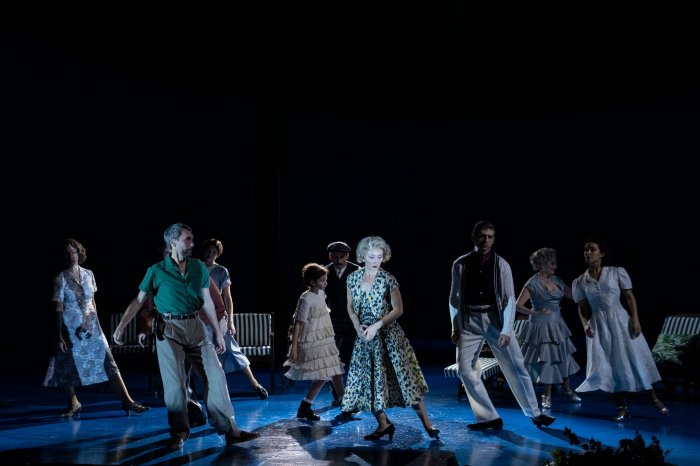Sure, over at “The Lion King,” Mufasa tells Simba all about how certain animals kill and eat each other as part of the “Circle of Life,” but we don’t really see the puppets and puppeteers engage in anything too graphic or bloody (with even the traumatic death of Mufasa rendered in a relatively family-friendly manner).
On the other hand, the new stage adaptation of Yann Martel’s 2001 novel “Life of Pi,” which just opened on Broadway, contains life-size animal puppets that on occasion violently tear each other apart for food, with red ribbons being used to suggest gushing blood.
Did I mention this is an ideal show for elementary school children, celebrating the imagination and resourcefulness while showcasing stunning visual design elements?
In “Life of Pi,” a 16-year-old Indian boy named Pi (Hiran Abeysekera), who was emigrating with his family (and the animals that comprised their zoo) to Canada, gets shipwrecked and stranded at sea with an orangutan, a hyena, and finally a threatening Royal Bengal tiger named Richard Parker (which also engages in conversation with Pi in one delirious sequence).
The performers portray the animals using puppetry (designed by Nick Barnes and Finn Caldwell) ranging from small fish that are attached to the bottom of sticks to multiple people coming together to create Richard Parker in a remarkable feat of theatrical wizardry and physicality. The storytelling is also assisted through video animation (by Andrzej Goulding), which turns the stage floor into the ocean. (This truly is a show to watch from above in the mezzanine.)
All the while, the visuals are anchored by the fact that Pi is telling the story from a hospital bed, which itself pops up inside the lifeboat. When he begins to narrate his saga, a giraffe emerges from a hospital window.
For all its visual ingenuity, the production (which originated in the U.K. and is directed by Max Webster) displays the strains of adapting a novel of first-person narrative, adventure, and philosophic meditation to the stage. The first half of the play (setting up Pi’s life in India with his family and their zoo) can be expository, while the second half (with Pi at sea) moves slowly and can get monotonous.
But on the whole, “Life of Pi” is a most impressive and well-executed piece of theater. It’s a shame that Richard Parker is likely not eligible for a Tony Award nomination for Best Featured Actor in a Play. Then again, one suspects that the artists that brought the tiger and the other animals and visual effects to life will be deservedly recognized.
“Life of Pi” is playing at the Gerald Schoenfeld Theatre, 236 W. 45th St., lifeofpibway.com.



































